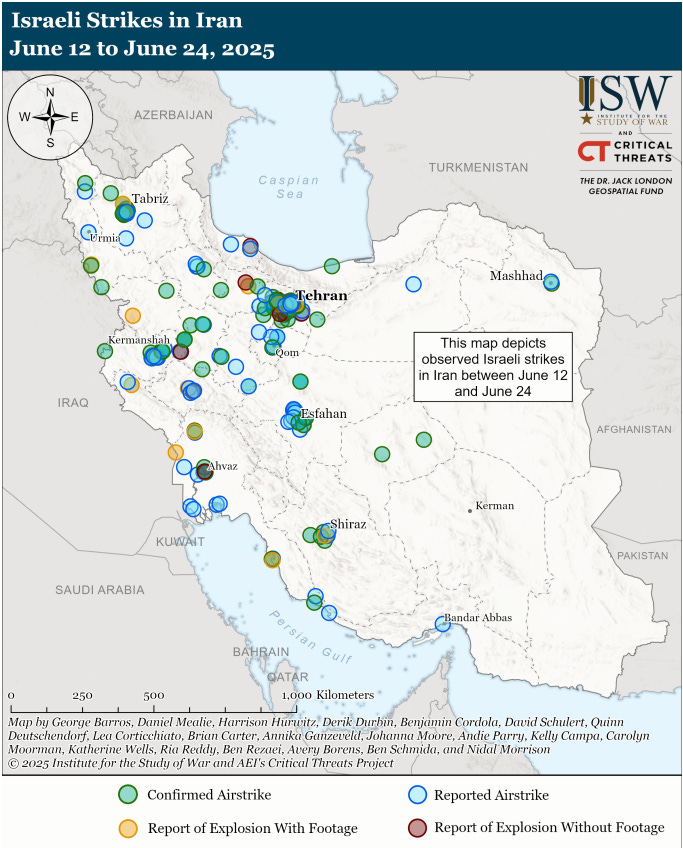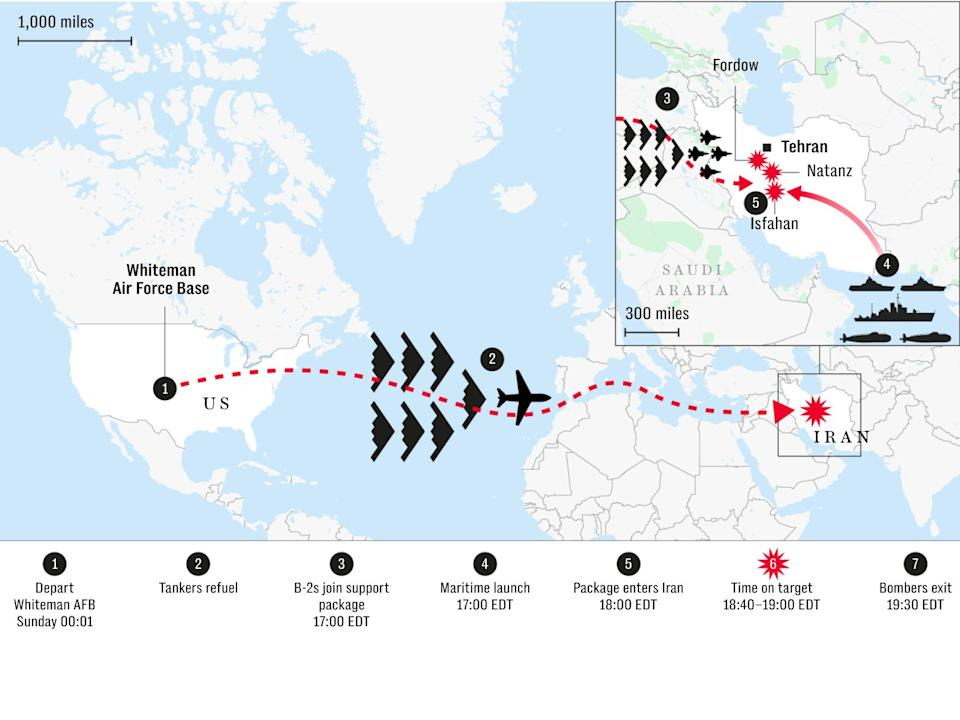The cease-fire between Israel and Iran holds, for now. Both sides got their final shots – Iran with a few missiles and an Israeli retaliation against an Iranian radar system – but it holds. The “12 Day War” is potentially over. At least the first stage of it.
It’s tough to disagree with the success of the Israeli strikes, even if you are opposed to the strikes themselves. (Not that we’re opposed.) After years of planning and months of covert operations inside Iran, Israeli drones – launched from within Iran with the support of Israeli forces on the ground – struck surface-to-air missile launchers and Iranian air defenses, allowing Israeli aircraft to strike more than 100 military and infrastructure targets, including Iran’s “main nuclear [uranium enrichment] facility in Natanz,” damaging its underground structures, enrichment capabilities (allegedly), and overall infrastructure.

There is an interesting question of whether Iran’s imminent development of nuclear weapons served as the basis for the strikes. After the campaign commenced, Prime Minister Benjamin Netanyahu justified the actions in stating “Iran could produce a nuclear weapon in a very short time” – which he explained “could be a year. It could be within a few months.”
Now, that may be true. But given warnings and predictions about Iran’s nuclear trajectory over the years – they’ve been months away from nuclear weapons for years – it’s hard to assume that’s true. In 2012, Netanyahu warned that “Iran would reach the brink of being able to build a nuclear bomb in just six or seven months.” Others have made similar statements. The Washington-based Institute for Science and International Security (or ISIS, the group that picked what would become the most unfortunate acronym) issued a report in 2013 that Iran had “significantly shortened the time needed” to develop a nuclear bomb and could “enrich enough weapons-grade uranium for a single nuclear bomb in about a month.” And those are just a couple examples of many.
In any event, consider that the Israeli operation was less about imminence and more about opportunity and necessity. Necessity, for Israel, was non-negotiable. A nuclear Iran is seen as a threat to survival. As to timing, Israel had a small window. Iran’s air defenses (and its drone and ballistic missile storage and production sites) were already weak from Israel’s October 2024 strikes, and “Iran would have rebuilt its air defenses by the latter half of the year.” With that in mind, the decision to strike was reached, and they made a list of political, scientific, and military targets.
We’d argue that same logic extended to the Trump Administration. Iran’s defenses were significantly destroyed by the Israeli offensive. If there was any time to strike for America to strike at Iran’s facilities (Fordow, Natanz, and Isfahan), it was the moment Trump made the call. Risk was as low as it would ever be and plans to destroy the Fordow nuclear complex were years in the making – dating back to 2009, with recent revisions to correspond with changing circumstances. Credit to those who executed on such a quick timeline.
Of course, there is displeasure with Trump’s decision – even from those on the right, whether it be a desire to withdraw from interventionist actions or the belief that the military strike was unconstitutional. The worst fears, at least, have been proven to be unfounded. Iran, thus far, has not unleashed its fury on American interests. (Actions against Israel are another matter.) The missile strikes against a US airbase in Qatar, which caused zero casualties, were preceded by warnings. The Trump Administration is not committed to regime change – Trump saw the problems with Iraq and Afghanistan, and is aware of the public’s general disapproval on that issue, even where there is strong opposition to a nuclear Iran and a desire for a more moderate Iranian government. (To say the obvious, wanting a different regime is not the same as wanting to go through everything regime change entails – the blood, the money, the sacrifice.) Trump knows that can’t be his legacy.
Instead, we saw successful and limited strikes. Though early “intelligence assessments” leaked to CNN alleged the strikes only set back the Iranian nuclear program “by months,” Administration officials have gone on the record to dispute that claim. According to CIA Director John Ratcliffe, “a body of credible intelligence indicates Iran’s Nuclear Program has been severely damaged.”
Director of National Intelligence Tulsi Gabbard maintains that it will take Iran years to rebuild their facilities.
You might expect that from political figures, but even the head of the International Atomic Energy Agency concluded that the centrifuges at Fordow sustained “significant physical damage” and “these centrifuges are no longer operational.” He further stated that the Iranian nuclear program experienced “enormous damage” which could set it back “decades, depending on the type of activity or objective.”
It might be too early to tell whether that “decades” comment is accurate. Not all of Iran’s nuclear sites were damaged (just the most significant ones) and the country’s enriched uranium is still in Iranian hands. Time will tell just how successful this operation was, not only regarding Iran’s capabilities but in whether it made them more willing to negotiate and more willing to engage in oversight of its nuclear program. (Assuming it could be overseen.) At a minimum, Iran is further from nuclear capabilities than it was yesterday. Likely by years. And in the short term, success is measured not only in the completion of the American mission but in Trump’s constraint.
Click this link for the original source of this article.
Author: Techno Fog
This content is courtesy of, and owned and copyrighted by, https://technofog.substack.com and its author. This content is made available by use of the public RSS feed offered by the host site and is used for educational purposes only. If you are the author or represent the host site and would like this content removed now and in the future, please contact USSANews.com using the email address in the Contact page found in the website menu.











